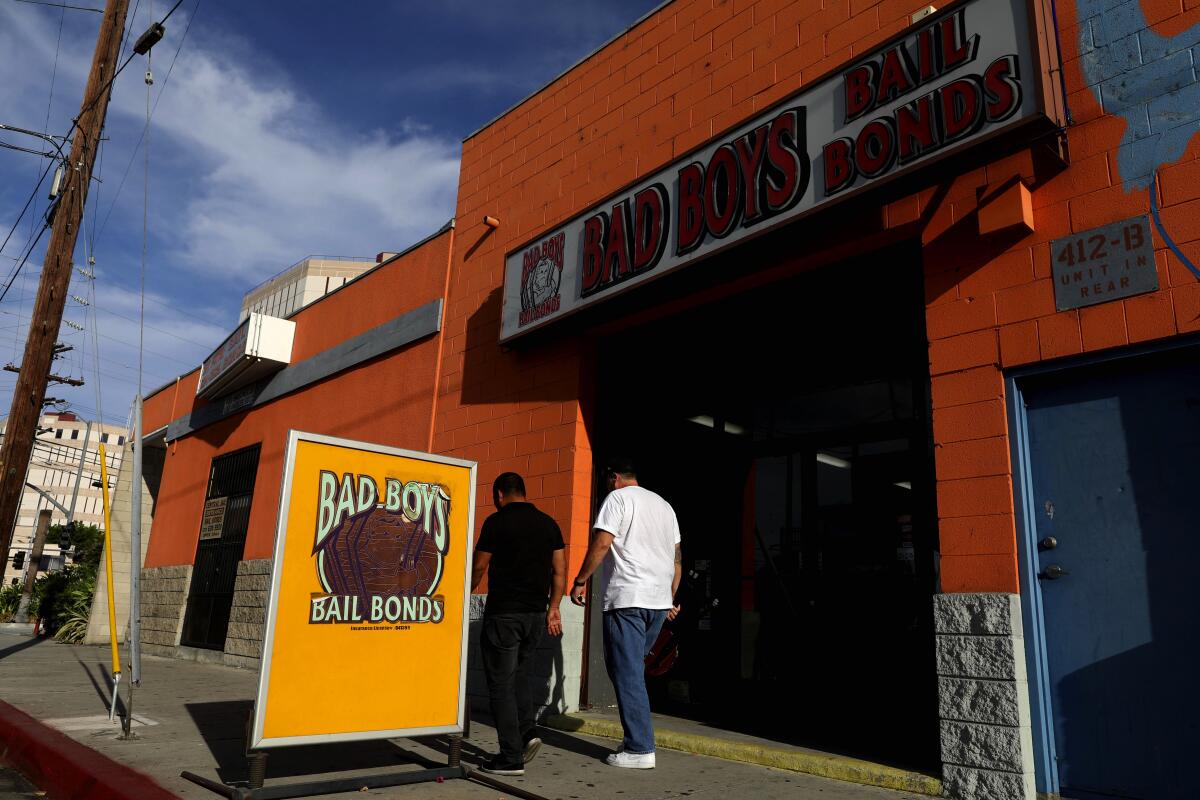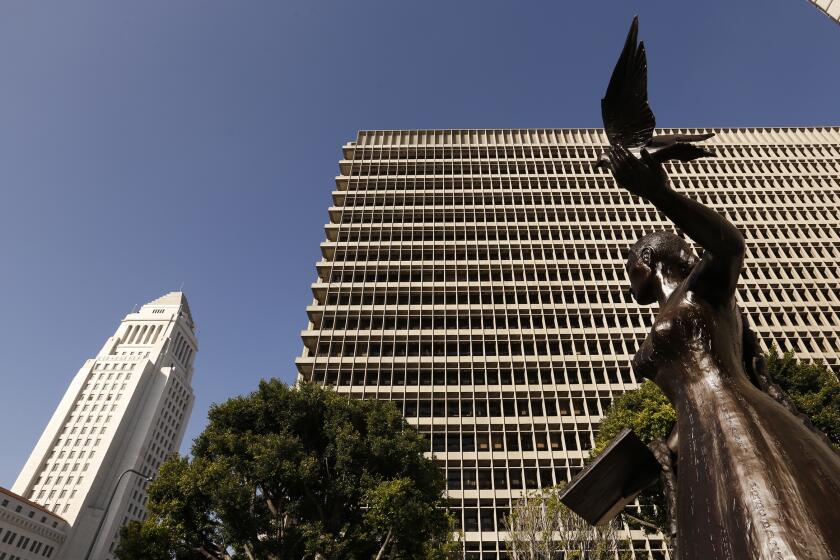Opinion: As judges, we’ve made thousands of bail decisions. Here’s the truth about detention and public safety

- Share via
Often when judges determine that a person accused of a crime can safely be released from jail and return to court when directed, they face criticism for “letting the accused out” by reducing monetary bail or “allowing” the accused to bail at all. This lack of understanding around the bail process undermines the public’s trust in the rule of law.
As retired and current California trial court judges with more than 90 years of collective experience, we have presided over and made thousands of difficult release decisions. While each of our state’s 58 county superior courts may be at a different point on their path toward a safer, fairer and evidence-based pretrial justice process, the California Constitution makes clear that detention is to be the limited exception, not the rule. And studies of this approach to date have reinforced that it promotes, rather than undermines, public safety.
Neither should anyone else. Cash bail is profoundly unjust for people facing criminal charges who don’t have money, and a pointless ritual for people, like the former president, who do.
In California, bail is the right of an arrested person to be released prior to trial on the least restrictive terms and conditions that adequately protect the safety of an alleged victim and of the public at large, as well as prevent the person’s flight to avoid prosecution. That right is enshrined in the California Constitution and guaranteed to all arrested individuals. The limited exception is when there is substantial evidence that the person committed the charged crime and the court finds by clear and convincing evidence that their release likely will result in great bodily harm to others, or the person has made threats against others they are likely to carry out if released.
In other words, under state law, bail is a mechanism to bring about conditional release, not to keep a person charged with a crime in custody.
Setting monetary bail at such high amounts that it becomes a de facto detention is an abuse of this system. In fact, in 2021, the California State Supreme Court unanimously ruled that such a practice is unconstitutional. Any pretrial detention must be ordered by a judge based on an individualized assessment, not simply the charged crime, because people incarcerated pending trial “unquestionably suffer,” as California state justices previously termed it, a “direct grievous loss” of freedom, and detention prior to trial is, according to the Supreme Court, “the carefully limited exception.”
In California, we do not need to speculate about the consequences of expanding the pretrial release of persons charged with a criminal offense. From 2019 through 2022, the California Judicial Council studied the pretrial assessment and release practices of 16 trial courts across the state. The courts tracked more than 422,000 persons from arrest to trial to determine whether they were arrested for new crimes committed while on conditional release from the initial offense, and whether they returned to court as ordered.
Cash bail will no longer be a condition of release for all defendants in misdemeanor and non-violent felony cases in one of the nation’s largest court systems starting Oct. 1.
This pilot program provided an opportunity to test the process of increased release without monetary bail. The results strongly support the expansion of conditional pretrial release. They showed a decrease in the rearrest rate and in the failure to appear rate of persons charged with a misdemeanor. There was an increase in the failure to appear rate of persons charged with a felony, but this may be effectively countered by shoring up the reminder system now being implemented by many trial courts.
Indeed, the pilot also showed positive results for new means of assuring that individuals charged with a crime appear in court. In Alameda County, for example, the 2019 appearance rate in criminal matters was 47% for persons released without having to post money bail. After the implementation of a court date reminder system relying on manual and automated phone calls and text messages, the appearance rate increased to 87%. By the end of the study, 14 of the 16 pilot projects had implemented some form of a reminder system.
The misunderstanding of bail as a tool to incarcerate people before trial has left in its wake a simultaneously unsafe, unfair and unjust legacy. No arrested individual who is judicially determined to pose a substantial threat should ever be allowed to buy their unconditional release. Similarly, no arrested person should ever be detained simply because they cannot afford monetary bail.
Everyone is entitled to a timely, individualized release decision that is conducted with due process in open court with attorneys present, guided by constitutional guarantees and exclusively made by a judge in accordance with the law. Understanding and honoring this constitutional right of all our citizens also helps keep Californians safer.
Brett R. Alldredge is a judge of the Tulare County Superior Court. J. Richard Couzens is a retired judge of the Placer County Superior Court. Sherrill A. Ellsworth is a retired judge of the Riverside County Superior Court.
More to Read
A cure for the common opinion
Get thought-provoking perspectives with our weekly newsletter.
You may occasionally receive promotional content from the Los Angeles Times.












